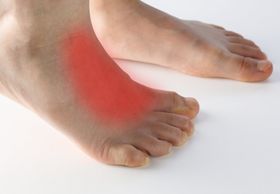Wearing Orthotics: Is It a Life-Long Necessity?
Updated September 19, 2024

Orthotics are prescribed in various forms to treat a range of foot conditions that you may experience. These conditions include plantar fasciitis/heel pain, bunions, metatarsalgia, and more.
Acquiring the correct orthotic for the specific condition you are experiencing is paramount to managing the condition effectively. Orthotics are a cost-effective and safe way to prevent existing conditions from getting worse or prevent conditions from arising altogether.
But how long do you have to wear them for? We answer this question and more below.
How Long Do You Normally Have to Wear Orthotics?
It is usually recommended that you wear the orthotics for a lengthy period of time, allowing the feet time to adjust to the altered foot biomechanics. It may take up to a month for your feet to adjust to the new orthotics and the support they bring to the feet.
For the most part, orthotics are considered permanent and are often used indefinitely. As we discuss in more detail below, removing orthotics from your shoes may cause the condition to produce unwanted symptoms or get progressively worse.
When Are Orthotics Permanent?
Certain conditions are effectively managed through long-term orthotic usage. However, the orthotics do not correct the problem itself but rather help to manage the symptoms.
This means that orthotics only provide benefits while wearing the specific insert, and removing them may cause the pain and symptoms to return. Orthotics support the feet, maintaining the arch of the foot, for example, which could be lost when the orthotics are removed from the shoe.
If you have conditions like flat feet, very high arches, or bunions, which are usually lifelong conditions, you may need to wear orthotics in your shoes indefinitely. Doing this will be the most effective way to conservatively manage any conditions from worsening with age.
If you stop wearing your orthotics, you could see a quick return of your original symptoms. Or worse still, it could cause an injury by removing the support that the foot and ankle have adjusted to.
How Long Do Orthotics Last?
If you have to wear orthotics permanently, you may wonder how long a pair will last. Generally, custom orthotics last 2–3 years before needing replacing. However, how long your orthotics last depends on how often you wear them and the activities you engage in.
People who do a lot of running or jumping activities will need to replace the orthotics more regularly than those who are less athletic or who use them less frequently.
In addition, different types of orthotics are made from various orthotic materials, and each material wears differently.
When to Stop Wearing Orthotics
Orthotics for heel pain can be stopped if your heel pain has disappeared. Nevertheless, it is usually recommended to continue to use the orthotics to reduce the chances of a possible flare-up in the future.
If you do stop wearing your orthotics with the cessation of pain, making use of the various other conservative management strategies is strongly advised. Should pain associated with the same condition return, orthotics can be reintroduced into your shoes. It may take some time for the pain to subside thereafter.
Steps You Can Take to Stop Wearing Orthotics
To avoid acquiring and using orthotics for the same effect, many other conservative management strategies can be implemented.
Below are a few conservative strategies that can also be used to manage foot conditions effectively:
Exercises
A range of exercises can be done daily to help you relieve your symptoms and improve your overall quality of life.
Exercise has proven to be effective in strengthening the muscles of the foot and lower leg to maintain the foot arch or restore normal foot biomechanics.
For example, by strengthening the muscles supporting the arch in people with flat feet, the arch height is self-maintained, and the need for orthotics can be negated.
You can read our previous posts on exercises for flat feet, plantar fasciitis, and overpronated feet.
Correct Shoe Choice
Should your shoes be causing you pain or discomfort throughout the day, and if you find relief when the shoes are removed, then your shoes could be contributing to your pain. You should look into alternative options for shoes that are more comfortable.
Wide-fitting shoes are recommended for people with bunions, while a shoe with a low heel and arch support is best for someone with flat feet.
Stretches
Regular stretches are another great way to combat pain in the feet and lower legs, including the rest of the body.
Stretching the underside foot muscles and the calf muscles will lessen the daily tension and strain placed on those structures.








